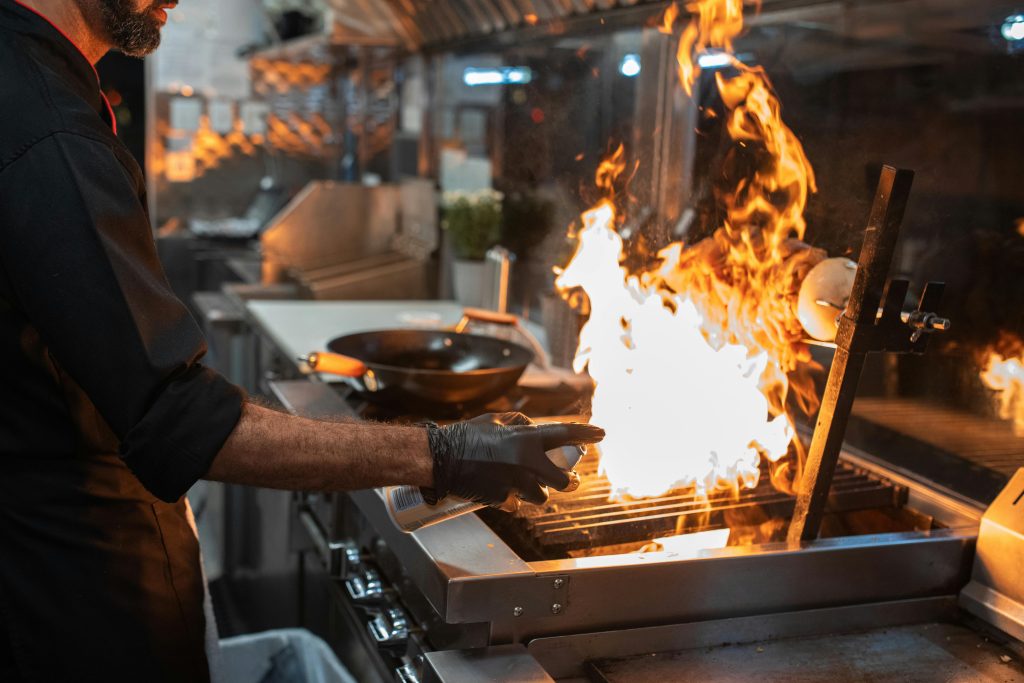When it comes to showcasing your kitchen creations, a picture truly is worth a thousand bites. In today’s visually-driven world, the way you present your dishes on digital platforms can make or break your restaurant’s appeal. Mastering food photography isn’t just for professionals – even with a smartphone in hand, you can capture mouthwatering shots that have your audience craving a taste. Let’s dive into the basics of food photography that will have you clicking like a pro.
1. Natural Light Brilliance:

Natural light is your best friend in food photography. During daylight hours, set up your dishes by a window where soft, diffused light can work its magic. This natural illumination enhances colors, textures, and details, making your food look as delectable as it tastes. Imagine a plate of fresh fruit salad bathed in the gentle morning sun – those vibrant hues will practically pop off the screen.
2. Rule of Thirds Magic:

Imagine a tic-tac-toe grid on your camera screen – that’s the rule of thirds. Place key elements like the main dish or focal point at the intersections of those lines. This technique instantly adds balance and intrigue to your composition. For example, if you’re snapping a burger, position it so that the juicy patty and colorful veggies fall along those lines, drawing the viewer’s eyes right where you want them.
3. Angles for Appetite:

Angles can transform your food’s story. Experiment with different perspectives like shooting from above, at a 45-degree slant, or at eye level. Each angle highlights distinct elements – from the layers of a cake to the textures of a pizza crust. Picture a stack of pancakes captured from above, with syrup cascading down the sides – viewers will practically smell the deliciousness.
4. Focus on Details:

Zooming in on details adds an artistic touch. Adjust your camera’s focus settings to capture the finer aspects of your dish. Imagine photographing a bowl of soup where the steam swirls artfully around the herbs on top, showcasing the aroma and warmth.
5. Background and Props:

Your background should complement, not compete with, your dish. Opt for simple backgrounds that elevate your food, like a rustic wooden table or a clean marble countertop. Including relevant props, such as utensils or ingredients, adds context. Imagine a shot of a cupcake with a vintage cake server nearby – it evokes the idea of a delightful tea party.
6. Embrace Negative Space:

Negative space is your secret weapon. Leave ample space around your dish to create an elegant, minimalist composition. Imagine a single macaron in the middle of a vast, empty plate – the simplicity emphasizes the delicate beauty of the treat.
7. Editing with Care:

Editing enhances, not disguises. Use editing tools to refine brightness, contrast, and color without going overboard. For instance, if you’re capturing a fresh salad, subtly adjust the greens’ vibrancy to keep them looking just as crisp and inviting as they are in real life.
8. Experiment and Learn:
Every shot is a chance to improve. Play with different setups, lighting conditions, and styles. Through experimentation, you’ll uncover what works best for showcasing your signature dishes. Maybe a shot of your house specialty burger under cozy, warm lighting evokes comfort and indulgence.
9. Storytelling through Visuals:

Photos can tell a culinary tale. Capture not just the dish, but also the process – a chef adding the final touch of sauce or a sprinkle of herbs. These shots immerse viewers in the journey of creating the meal.
By embracing these basic food photography techniques, you’ll be able to craft images that not only entice taste buds but also tell a story that’s as captivating as your restaurant’s flavors. With practice, patience, and a keen eye, your food photos will become an irresistible feast for the eyes – and ultimately, for the senses.



